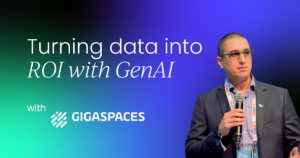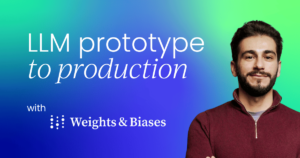Data sharing is the oxygen of Artificial Intelligence (AI) and Machine Learning: without it and without AI regulation, companies will struggle to balance innovation and ethical considerations in an increasingly saturated economy.
In this article, I aim to outline how entrepreneurship is playing an important role in the development of AI regulation within the UK and beyond.
The information age and AI
Stepping back in history provides an important basis for this article and highlights context that, upon reflection, is something we take for granted in today’s information era: our data.
It could be argued that we lost control of our data when the web was invented and privacy implications have continued to taunt policymakers, but it could also be described as the best thing to happen, as we now have access to products and services that may have been inaccessible if our data had not been disseminated.
Understanding the mechanics of the information age requires us to consider subsets of personal data and how batches of this data on a larger scale contribute to information flow.
In the UK alone, a minimum of 18 legal frameworks control and develop the use of AI and therefore, combining this with AI’s pacing problem, the intersection of existing regulation presents an opportunity for entrepreneurs to explore alternative ways to manage such technology.
The vast array of unknowns certainly facilitates a new way of thinking, but equally presents challenges to ensure founders balance workarounds with existing legal constraints. One concept which will increase in encouraging and demystifying this area of thinking is Signalling Theory.
Entrepreneurship and signalling theory
Similar to personalisation, the backbone of AI regulation is the patterns of data across businesses of varying sectors, sizes and countries. An area of increasing importance one should explore is the fundamentals of Signalling Theory: an area central to understanding how information is transmitted, acted upon, and interpreted between parties.
The party transmitting the information to the receiver will aim to convey positive intent, but interpretability due to the transmitter knowing more than the receiver may distort the usefulness of the information. With Signalling Theory playing a vital part in entrepreneurship, the first step is to consider its role in the venture creation model.
Whilst there are several scenarios where such theory could be applied, I plan to expand on two aspects within the venture creation model within this article, specifically a) the opportunity and b) model development.
The opportunity
Artificial Intelligence and Machine Learning are tools that can do more than add value to an organization’s wider data objectives: they can additionally be used to determine the viability of a new venture or diversification plan.
Generative AI, in particular, has paved the way for founders to obtain prompt answers to industry-specific data that may have, in the past, only been available through expensive forecasting and analytics applications.
Additionally, opportunities for entrepreneurial thinking may arise in the development of the Data Protection Impact Assessment (DPIA).
However, stricter requirements are in place as to how and what information is included, through the development and consultation with the Information Commissioners Office (ICO) leaders may identify novel ways to harness or deploy AI that fall outside the realm of the regulators remit, or more sparingly, identify a gap with how AI could be scaled within the value chain relative to their sector.
That’s not to say regulation would be able to be easily moulded or the laws promptly adapted, but it may alternatively provide an important basis for policymakers to consider the current regulatory regime, especially if other organisations identify similar patterns.
This open-minded, entrepreneurial way of thinking would particularly suit the UK’s Pro-innovation type agenda and should be encouraged as the pace of AI continues to accelerate.
Looking to the bigger picture, signalling theory is important here: the veracity (trustworthiness) of signals between the company itself and the regulators through the DPIA in the long run will be crucial in determining the adaptability of the UK’s AI regulatory plans.
As the incumbent government seeks to clarify AI regulation within the creative industries, only time will tell how opportunistic regulation develops from entrepreneurial findings over risk-based regulation.
Model development
Now that the opportunity aspect has been explored, let’s turn to how entrepreneurial AI regulation can help in the development of a business model. For this part, let’s consider Human In The Loop systems (HITL).
Typically, HITL systems will combine the expertise of human and machine ability with the aim of minimising bias in the training and development of AI models, but the combination could equally add value in developing business ideas. One scenario is to consider a company seeking to diversify its business and expand the use of AI.
Instead of just considering how AI might add value, the organisation’s strategic objectives could be combined with the assistance of datasets and associated machine learning algorithms, resulting in imperceptible patterns that may otherwise be interpreted as harmful.
Similar to assessing business opportunities, signalling theory, albeit on a smaller scale, will play a role in business model development. The leadership team will have their ideas on how they wish to execute their plans, but considering the expense of technology assets, there’ll undoubtedly be varying levels of quality and trustworthiness in the information exchange between teams on how to rationalise the assets in the most cost-effective manner to ensure efficient deployment.
Whilst there’s plenty of literature outlining the broader impact of signalling theory, the concept can very much appear internally between teams more often than expected.
Conclusion
Regardless of whether an organisation has matured in their use of AI or is just starting out, they’ll possess an intricate understanding of the information it intends to relay to its teams or investors.
When combined with signalling theory, these underlying layers present elements of ambiguity within the abstraction of entrepreneurial thinking. In combining both these areas with the UK’s non-statutory approach regime to regulating AI, they present opportunities for business leaders, academics and policymakers to approach regulation with a different perspective.
Bibliography
[1] Spence, M. (1973). Job Market Signaling. The Quarterly Journal of Economics, [online] 87(3), pp.355–374. doi:https://doi.org/10.2307/1882010.
[2] UK Government (2023). AI regulation: a pro-innovation approach. [online] GOV.UK. Available at: https://www.gov.uk/government/publications/ai-regulation-a-pro-innovation approach.
[3] Connelly, B.L., Certo, S.T., Reutzel, C.R., DesJardine, M.R. and Zhou, Y.S. (2024). Signaling Theory: State of the Theory and Its Future. Journal of Management, 51(1). doi:https:// doi.org/10.1177/01492063241268459.
Ana Simion outlines how entrepreneurship is playing an important role in the development of AI regulation within the UK and beyond.































